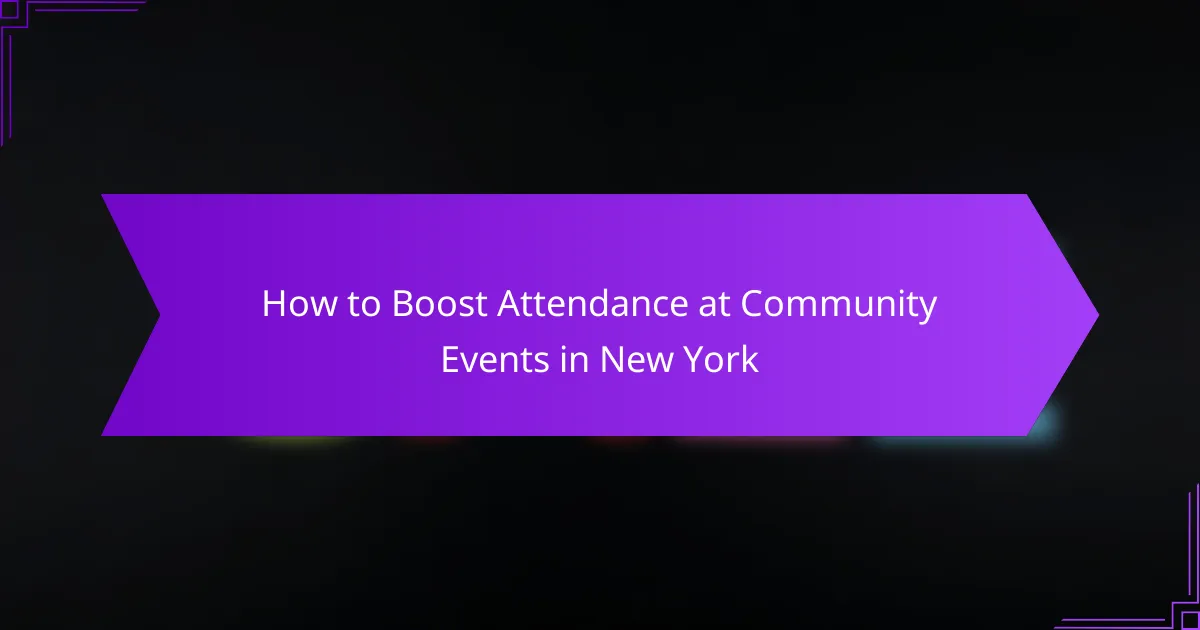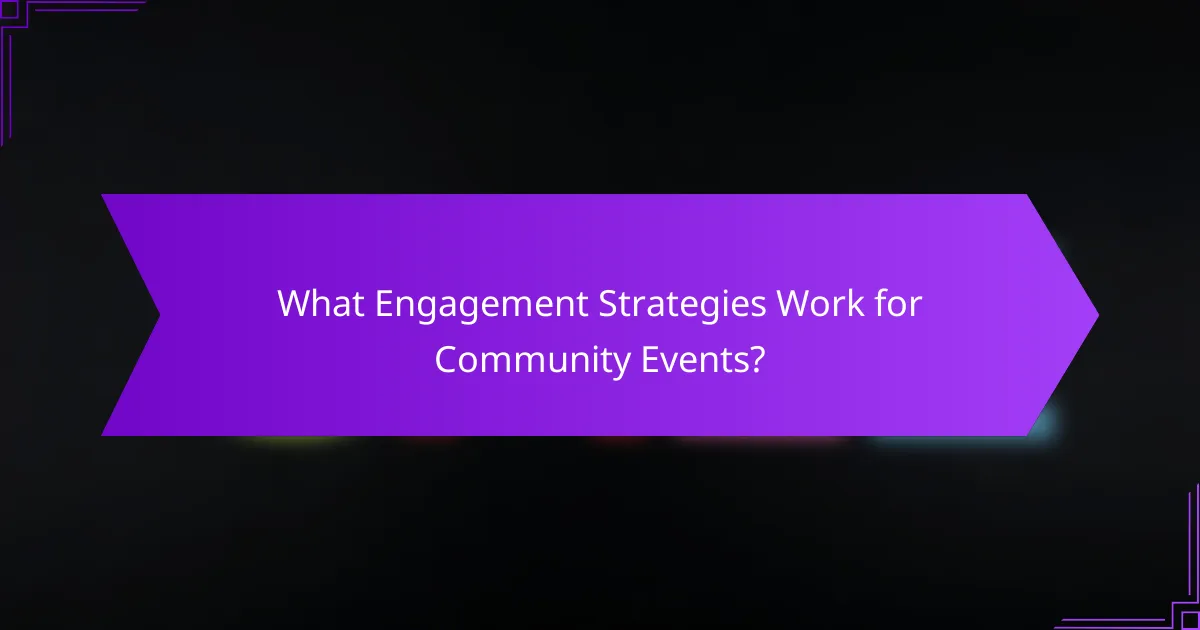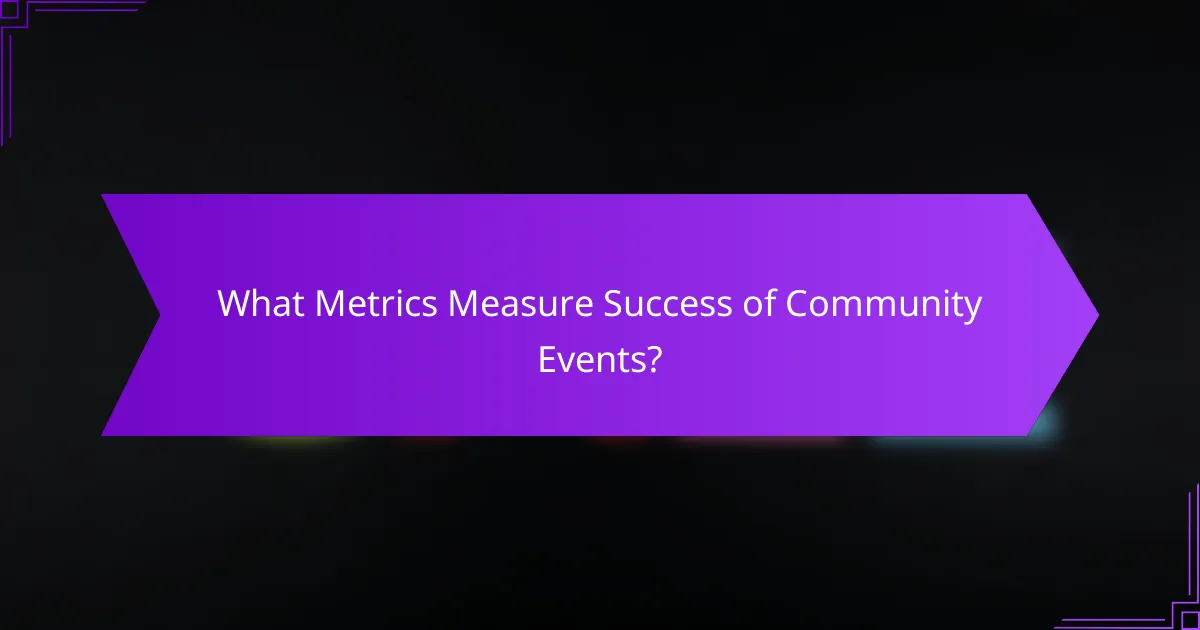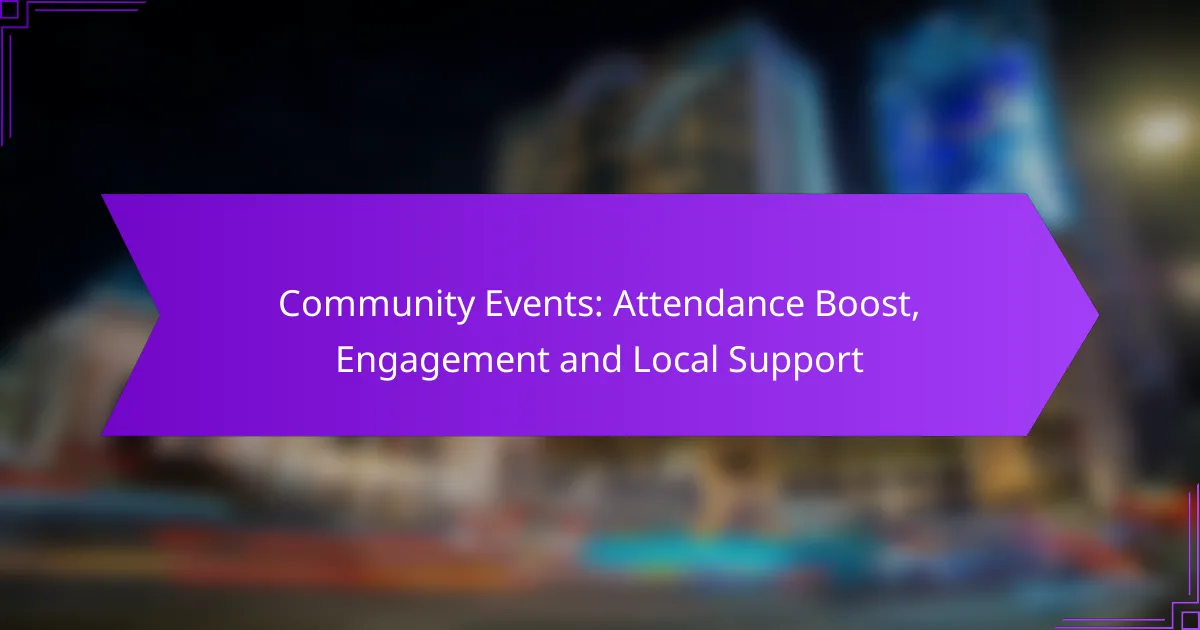Boosting attendance at community events requires a strategic approach that includes targeted marketing, strong local partnerships, and effective social media engagement. By creating interactive experiences and fostering a sense of belonging, organizers can enhance participation and support from the community. Additionally, involving residents and local leaders helps cultivate pride and ownership, ultimately attracting more attendees and encouraging active involvement.

How to Boost Attendance at Community Events in New York
To enhance attendance at community events in New York, focus on strategic marketing, local partnerships, and effective use of social media. Engaging the community through these methods can significantly increase participation and support.
Effective marketing strategies
Implementing targeted marketing strategies is essential for attracting attendees. Use local newspapers, community boards, and flyers in popular areas to reach a wider audience. Consider advertising in local magazines or radio stations that cater to your demographic.
Additionally, create eye-catching visuals and clear messaging that highlight the event’s benefits. Early promotion, ideally a few weeks in advance, can help build anticipation and ensure higher turnout.
Partnerships with local businesses
Collaborating with local businesses can amplify your event’s reach. Businesses can help promote the event through their networks, and in return, they may benefit from increased foot traffic and visibility. Consider offering them a sponsorship opportunity or a booth at the event.
Engage with businesses that align with the event’s theme or target audience. For example, if it’s a health fair, partner with local gyms or health food stores to cross-promote the event.
Utilizing social media platforms
Social media is a powerful tool for boosting attendance at community events. Create event pages on platforms like Facebook and Instagram to share updates, engage with potential attendees, and encourage sharing among friends.
Utilize targeted ads to reach specific demographics in New York. Regularly post engaging content, such as behind-the-scenes preparations or sneak peeks, to maintain interest leading up to the event.
Engaging local influencers
Local influencers can significantly impact attendance by leveraging their follower base. Identify influencers who resonate with your event’s theme and invite them to participate or promote the event on their channels.
Offer them incentives, such as free tickets or exclusive access, to encourage their involvement. Their endorsement can lend credibility and attract their audience to your event.
Offering incentives for attendance
Providing incentives can effectively boost attendance at community events. Consider offering discounts, free refreshments, or raffle prizes to entice people to join. These incentives can create a sense of urgency and excitement around the event.
Promote these incentives prominently in your marketing materials and social media posts. Clearly communicate what attendees can gain by participating, making it more appealing for them to attend.

What Engagement Strategies Work for Community Events?
Effective engagement strategies for community events focus on creating interactive experiences that draw attendees in and foster a sense of belonging. By incorporating hands-on activities, live performances, and opportunities for feedback, organizers can significantly enhance participation and support from the local community.
Interactive activities and workshops
Interactive activities and workshops are essential for engaging attendees at community events. These can include hands-on demonstrations, craft stations, or skill-building sessions that allow participants to learn something new while connecting with others. For example, a local art fair might offer painting workshops where attendees can create their own pieces to take home.
When planning these activities, consider the interests of your target audience and ensure accessibility for all age groups. Providing materials at low or no cost can also encourage participation, making the event more inclusive and appealing.
Live entertainment and performances
Live entertainment, such as music, dance, or theater performances, can significantly enhance the atmosphere of community events. These performances not only attract attendees but also create a lively environment that encourages social interaction. Local bands or dance troupes can showcase regional talent while drawing in crowds.
To maximize engagement, schedule performances at peak times and promote them in advance through social media and local channels. Offering a mix of genres can cater to diverse tastes, ensuring that there’s something for everyone to enjoy.
Feedback and suggestion opportunities
Providing opportunities for feedback and suggestions is crucial for improving future community events. This can be done through surveys, suggestion boxes, or informal discussions during the event. Engaging attendees in this way shows that their opinions are valued and can lead to more tailored experiences in the future.
Consider incentivizing feedback by offering small rewards, such as raffle entries or discounts on future events. This not only encourages participation but also helps gather valuable insights that can enhance future planning and execution.

How to Foster Local Support for Community Events?
Fostering local support for community events involves engaging residents, organizations, and leaders to create a sense of ownership and pride. By building connections and highlighting local culture, events can attract more attendees and encourage active participation.
Building relationships with local organizations
Establishing partnerships with local organizations can significantly enhance community event support. Collaborate with schools, non-profits, and businesses to leverage their networks and resources, which can lead to increased visibility and attendance.
Consider hosting joint events or offering sponsorship opportunities to local businesses. This not only provides financial backing but also creates a vested interest in the event’s success.
Involving community leaders in planning
Engaging community leaders in the planning process can lend credibility and attract more participants. Leaders can provide valuable insights into community needs and preferences, ensuring the event resonates with local residents.
Invite leaders from various sectors, such as education, government, and faith-based organizations, to participate in planning meetings. Their endorsement can help rally support and encourage attendance from their respective networks.
Highlighting local culture and heritage
Showcasing local culture and heritage at community events can foster pride and encourage attendance. Incorporate local art, music, and cuisine to create a unique experience that reflects the community’s identity.
Consider featuring local artisans, musicians, or traditional food vendors. This not only supports local talent but also attracts attendees who are interested in celebrating their community’s rich heritage.

What Metrics Measure Success of Community Events?
Success of community events can be measured through attendance numbers, engagement levels, and feedback collected post-event. These metrics provide insights into how well the event resonated with the community and areas for improvement.
Attendance numbers and demographics
Attendance numbers indicate how many people participated in the event, which is a primary measure of success. Tracking demographics, such as age, gender, and location, helps understand who attended and whether the event reached its target audience.
For effective analysis, consider using registration forms or ticket sales data to gather demographic information. Aim for a diverse turnout to ensure the event appeals to various community segments.
Engagement levels during the event
Engagement levels reflect how actively participants interacted with the event’s activities and each other. This can be measured through participation in workshops, Q&A sessions, and networking opportunities.
Utilize tools like live polls or social media interactions to gauge real-time engagement. High engagement often correlates with a positive experience, so strive for interactive elements that encourage attendee involvement.
Post-event surveys and feedback
Post-event surveys are essential for gathering feedback on attendees’ experiences and suggestions for future events. These surveys can include questions about what participants enjoyed, what could be improved, and their likelihood of attending future events.
Consider offering incentives for completing surveys, such as discounts on future events or entry into a prize draw. Analyze the feedback to identify trends and actionable insights that can enhance future community events.

How to Create a Community Event Planning Checklist?
A community event planning checklist helps ensure that all essential elements are covered for a successful gathering. It streamlines the planning process, making it easier to track tasks, deadlines, and responsibilities.
Defining event goals and objectives
Clearly defining event goals and objectives is crucial for guiding the planning process. Consider what you want to achieve, such as increasing community engagement, raising funds, or promoting local businesses.
Establish specific, measurable objectives that align with your overall goals. For instance, aim for a certain number of attendees or a specific amount of funds raised. This clarity will help in evaluating the event’s success afterward.
Budgeting and funding sources
Creating a budget is essential for managing expenses and ensuring the event’s financial viability. Start by estimating costs for venue rental, permits, marketing, and supplies. Aim for a budget range that reflects your community’s typical event expenses.
Identify potential funding sources, such as local sponsors, grants, or ticket sales. Engaging local businesses can not only provide financial support but also enhance community involvement and visibility.
Logistics and venue considerations
Logistics play a vital role in the success of any community event. Consider factors like accessibility, capacity, and amenities when selecting a venue. Ensure the location is convenient for attendees and has necessary facilities, such as restrooms and parking.
Plan for essential logistics, including permits, insurance, and equipment rentals. Create a timeline for setup and breakdown, and assign responsibilities to volunteers or team members to ensure smooth execution on the event day.



